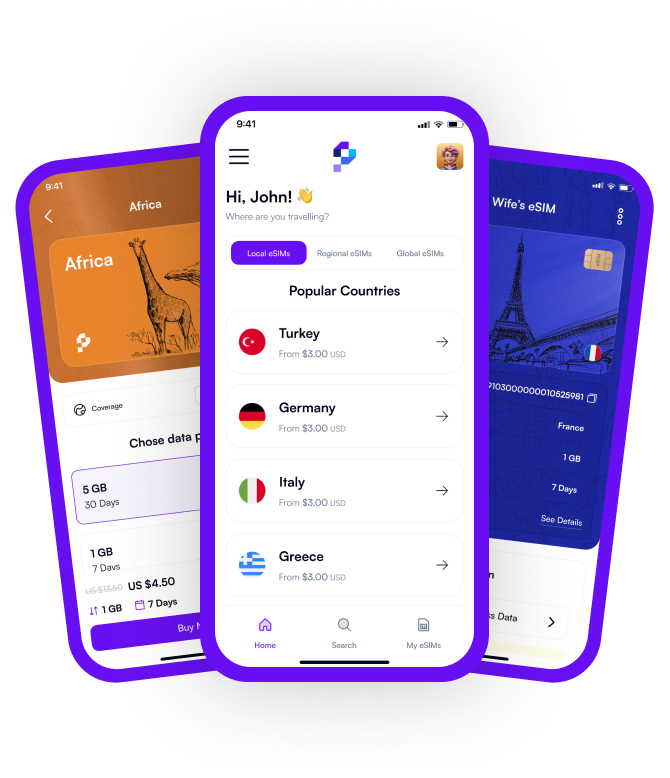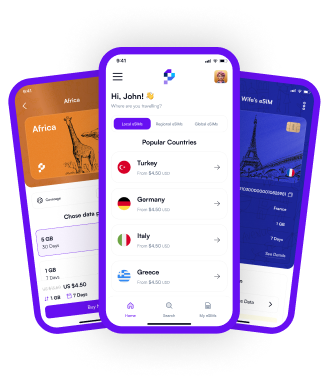Technology is radically changing our communication habits. While eSIM technology replaces physical SIM cards, it attracts users' attention with its dual-line usage feature. There is no longer a need for two separate SIM cards or phones to use two different lines. Thanks to eSIM , you can easily manage both your personal and business lines on the same device. Moreover, this technology makes the design of the devices more compact since it does not take up space. This flexibility offered by dual-line eSIMs provides a great advantage especially for business people and frequent travelers. So, what should we know about dual-line usage with eSIM ? Let's take a look at the details!
eSIM and What Does Dual Line Usage Mean?
eSIM is defined as a technology that is embedded into the device instead of a physical SIM card. This technology allows users to get rid of the hassle of changing or carrying SIM cards.
Dual-line usage offers the opportunity to actively use two different phone lines on the same device. Thanks to eSIM , one phone line can work via the physical SIM, while the other can work on the device with eSIM technology.
Advantages of Dual Line Usage with eSIM
of eSIM with dual-line usage brings many benefits. Here are the prominent advantages:
- Flexibility: Possibility to add a second line without a physical SIM slot.
- Space Saving: Allows for more compact device designs.
- Fast Switch: You can make operator changes in seconds.
- Ease of Travel: Adding a local line when traveling to foreign countries is very simple.
- Environmentally Friendly: Minimizes environmental impact by reducing physical SIM card production.
In what cases is dual-line usage useful?
The biggest advantage of dual-line usage is the ease of managing personal and professional life together. For example:
- Business people can use a separate line for business meetings.
- You can reserve your personal line for communication with family and friends.
- Frequent travelers can cut costs by adding a local line abroad.
eSIM, these scenarios become much easier. You can quickly switch between lines via your device, eliminating the hassle of inserting and removing physical SIM cards.
The Role of Technology in Dual-Line Usage
With the development of technology, the use of dual-line phones has also become widespread. However , eSIM takes this process one step further. Traditional dual-line phones required two physical SIM slots. This took up space in the device design and required users to carry a physical card.
eSIM technology, device manufacturers can now offer thinner and lighter designs. It also means users no longer have to worry about having to insert and remove physical cards. This not only means more practicality, but also more durable devices.
The Most Suitable Devices for Dual Line Use
eSIM support. Smartphones in particular are among the most widely used products with this technology. Here are popular devices with eSIM support:
- iPhone 14 and above models
- Google Pixel series
- Samsung Galaxy S series
- Huawei P and Mate series
How to Set Up Dual Line Usage with eSIM ?
Dual-line usage settings on an eSIM- supported device are generally done with the following steps:
- Check Carrier Support: First, make sure you have a carrier that supports eSIM .
- eSIM Profile: Activate eSIM by scanning the QR code you received from your operator .
- Manage Your Line: You can choose which line to use for calls, messages, or data from your device's settings.
- Switch: You can easily switch between lines as per your needs.
These processes can usually be completed in a few minutes with a user-friendly interface.
Possible Limitations of Dual-Line Usage
Like any technology, dual-line usage with eSIM may have some limitations:
- Carrier Support: Not all carriers support eSIM yet .
- Compatibility Issues: Older devices may not support eSIM .
- Security Concerns: Having digital eSIM profiles may increase cybersecurity risks.

